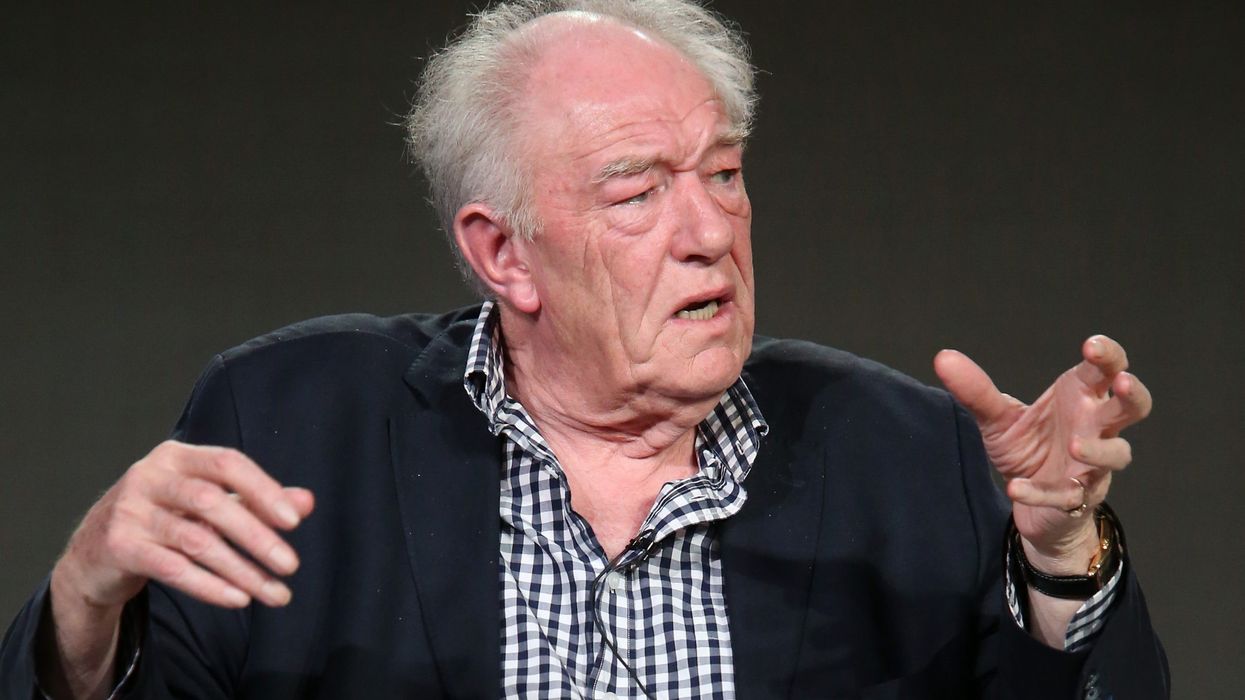Irish actor Michael Gambon, who was best known for his role as Albus Dumbledore in Harry Potter movies, has died. He was 82.
“We are devastated to announce the loss of Sir Michael Gambon,” his family said in a statement.
“Beloved husband and father, Michael died peacefully in hospital with his wife Anne and son Fergus at his bedside, following a bout of pneumonia.”
After Richard Harris, who had portrayed Albus Dumbledore in the first two films, passed away, Gambon assumed the role.
Gambon acknowledged that he had never read any of the Harry Potter books and added, "I'd never seen any of the previous films, but working on the series was huge fun, and for lots of dosh."
Gambon received an Emmy nomination for supporting actor in a miniseries or movie for playing Mr Woodhouse in the 2009 production of Jane Austen's Emma, which starred Romola Garai in the title role, in addition to his nomination for outstanding lead actor in a miniseries or movie for Path to War in 2002.
The actor received four BAFTA TV Awards for outstanding actor, first for his game-changing performance in The Singing Detective in 1986, then for Wives and Daughters in 1999, then for the exquisite telepic Longitude in 2000, and finally for Perfect Strangers the following year.
He received three Laurence Olivier Awards, the equivalent of a Tony, for his work in theatre: in 1986, for his performance in Ayckbourn's A Chorus of Disapproval, for best comedy performance; in 1988, for his role in Arthur Miller's A View from the Bridge, for best actor; and in 1990, for his comedy performance in Ayckbourn's Man of the Moment. He received another ten nominations for Best Actor.
He won three Laurence Olivier Awards in 1986, for Best Comedy Performance, for Ayckbourn’s A Chorus of Disapproval; in 1988, for Best Actor, for Arthur Miller’s A View From the Bridge; and in 1990, for Comedy Performance, for Ayckbourn’s Man of the Moment. He was also nominated for best actor a further 10 times.
Gambon made his movie debut in Othello, starring Olivier, in 1965.
At the age of 74, Gambon announced his retirement from stage performing in February 2015 due to memory loss that was making it more and more difficult for him to remember his lines, as per Variety.
A few years prior, due to panic attacks brought on by forgetting his lines, he had been sent urgently to the hospital.
In 1962, he wed Anne Miller, and in 1964, Fergus was born.
Gambon left the Kent home where he lived with his wife in 2002, and he quickly declared Philippa Hart to be his girlfriend.
He is survived by Hart and her two little sons, Michael, born in 2007, and William, born in 2009, in addition to his son Fergus.












